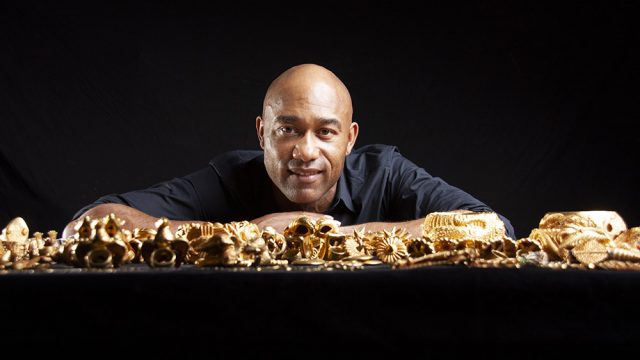The practical work on this collection of objects is now progressing. This follows the initial assessments of the condition of each object.
The conservation is split between:
– a metal conservator, who looks at the electrotypes – an example is the great Baptistery doors known as the Gates of Paradise in gall. 46B, made of gilded copper:
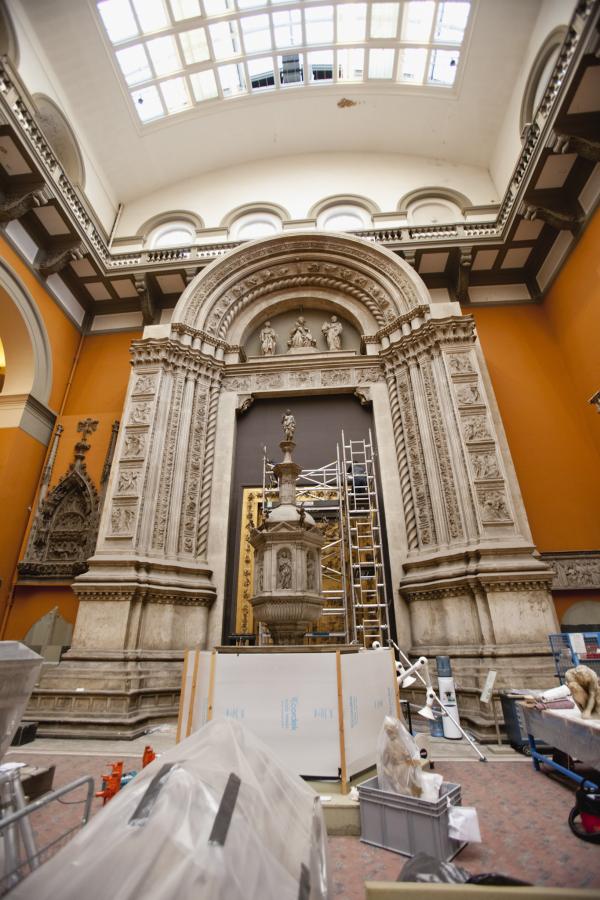
– a painting conservator, who is looking at the copy of Raphael’s School of Athens copied by Anton Raphael Mengs

– and the whole team of sculpture conservators, who are responsible for the conservation of the plaster casts.
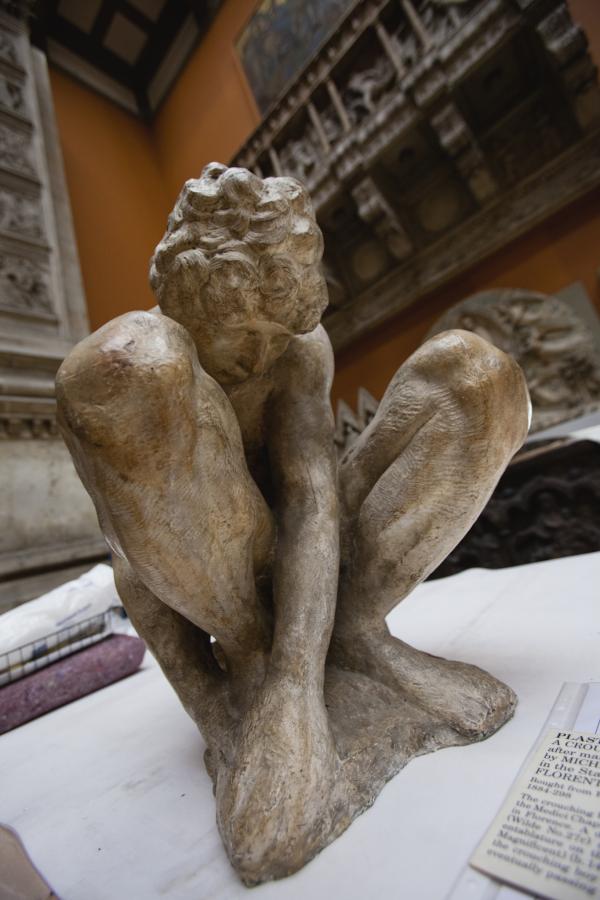
In order to reduce the risks during the transportation of objects between the store (at present located in-between the two courts) and the studio, a provisional workplace was set up in gallery 46 B (the Italian side of the Cast Courts), presently closed to the public.
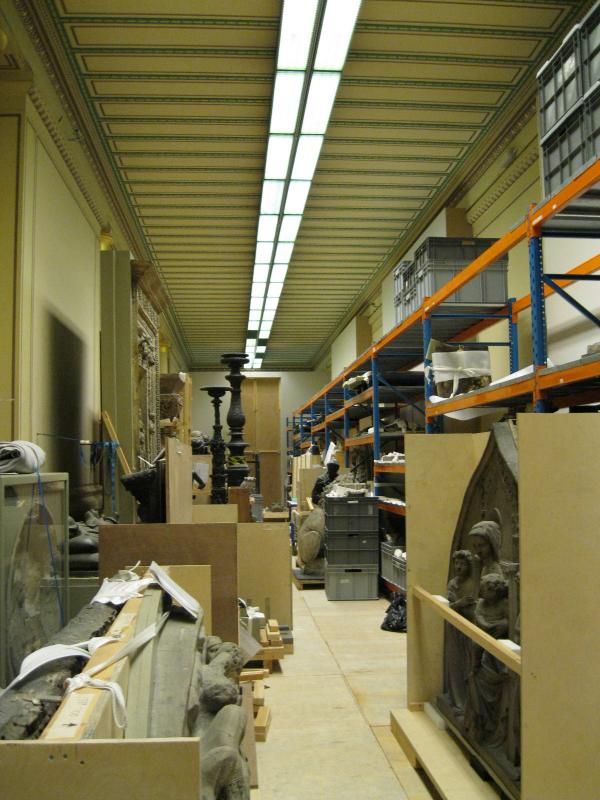
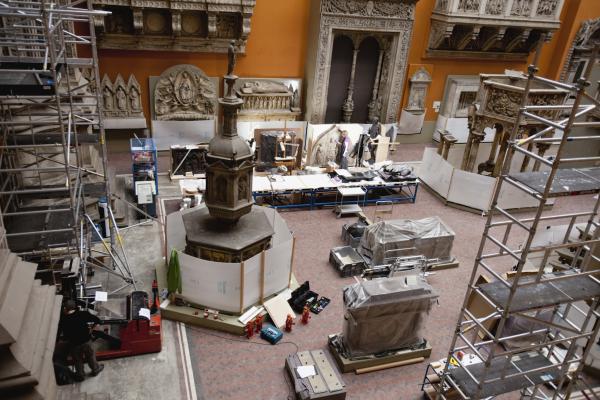
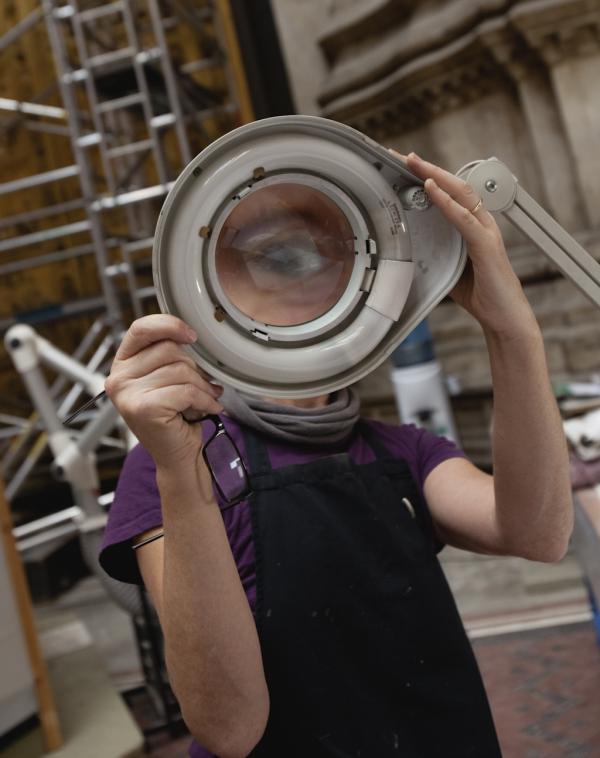
In this first phase, the work concentrates on the conservation of larger moveable objects, which are moved from the store to the gallery space. Photography for the museum records will also take place there and a provisional photo studio will be set up occasionally to photograph a batch of objects.
Later, when scaffolding will be erected to carry out the work on the gallery space itself, the conservators will move back to the studios to then focus on smaller size objects. By then, the huge painting will have been conserved and the Baptistery doors will have been moved to the opposite wall where it will be next displayed.
The conservation strategy is to first look at the structural stability of each object and to respond to any problems observed. Then, the surface, which may vary in nature, will most of the time only receive a minimal treatment, normally involving dusting using soft brushes and vacuum, several types of dry sponges, and rubbers. Some objects may receive further treatment such as the application of poultice, possible use of laser or selective use of chemical treatments. In future entries, we will show examples of specific treatments and what can be achieved by each, when used on the right surface type.
Another aspect of our work is to decide on how to treat old, disfigured over-paints and recent/old losses of plaster. The following three pictures show various stages of the conservation of the plaster cast of Benedetto da Maiano’s Virgin and Child :
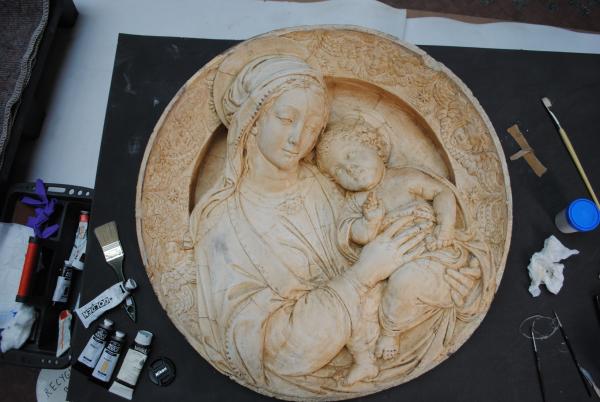
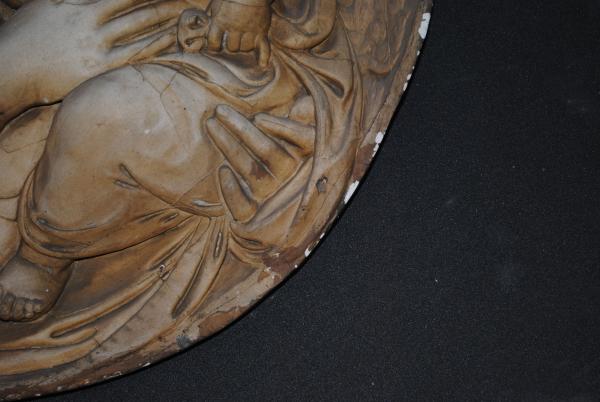
This detail of the bottom proper left shows new chips and old disfigured over-paints.
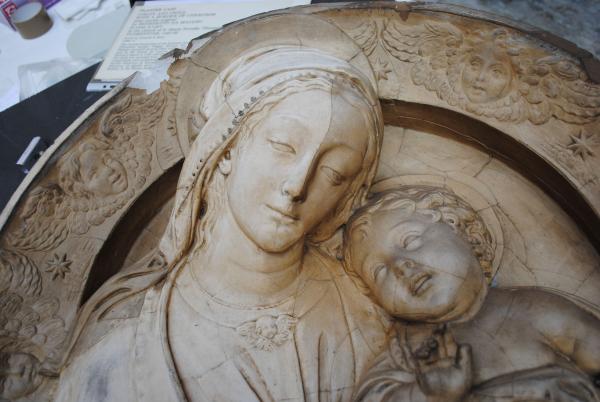
This relief was mainly cleaned using rubbers.
Surveys have shown that the visitors, when wandering in the Cast Courts, are not always aware of the material used to produce these objects. Since most plaster casts are painted to imitate the material of the original object, it is important to us to approach the cleaning of untreated plaster (this means normally unpainted or uncoated) in more depth, so the plaster, as a material, becomes more visible. We will try to do so within the work frame of this project, but plaster is a particularly sensitive material when it comes to cleaning. More information will be shared in later entries about the nature of plaster.
We also want to understand better how the collection was formed. The workshops where the sculptures were made are often known, but not always. We are in the process of getting a better understanding of types of surfaces and finishes and see if these can be grouped by workshop of production or not. An Excel sheet has been produced, which is progressively being populated with information that may help.
Information includes: object number, object type, maker, original material, whether we are now looking at the original surface treatment, surface finish, solubility tests, existing reports, presence or not of seam lines, surface degradation, casting technique.
We hope, with our overall approach, to bring more exciting information in the near future about these incredible objects!
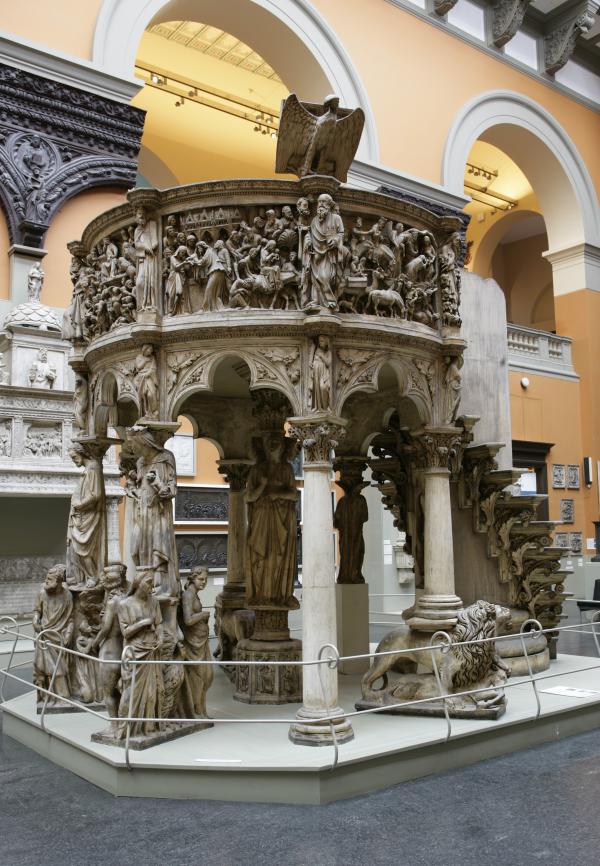
And finally, next time you get the chance to look closely at some objects such as this pulpit, think of the number of piece moulds necessary to cast it! Certainly not an amateur’s job! Incredible skill, patience and precision would have been required. These objects are works of art in their own right and not ‘merely’ casts.
